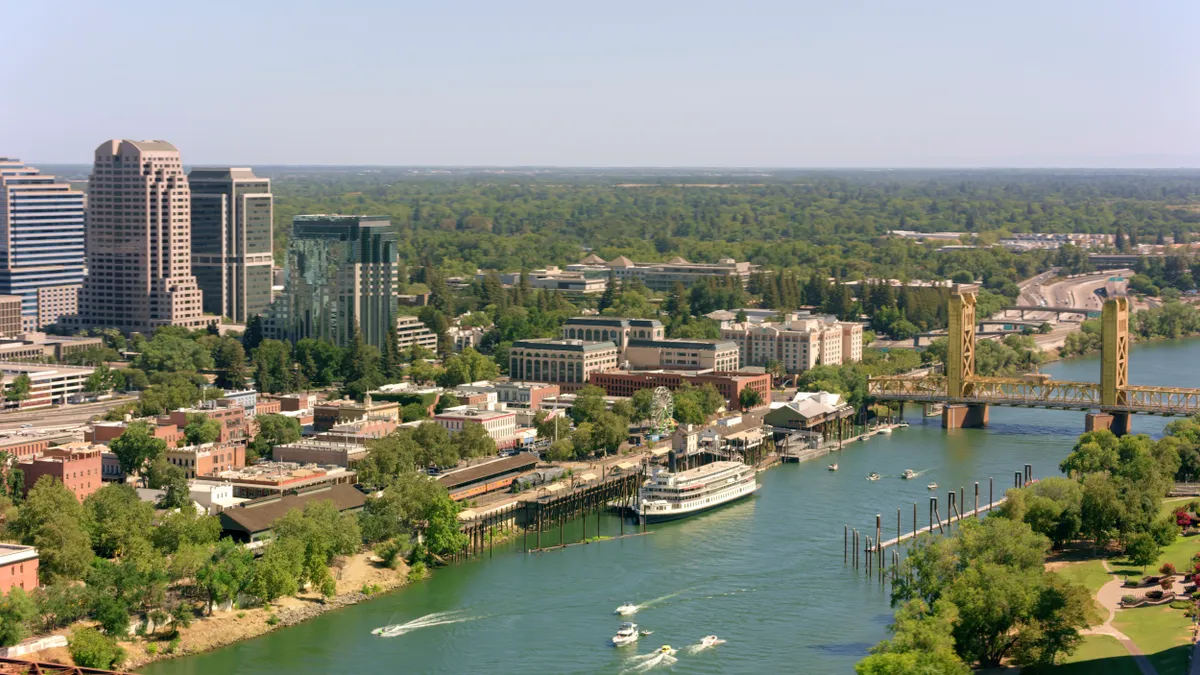Editor's Note: The following is a guest post from Robert Smith, senior vice president of business dvelopment at RATP Dev USA.
One of the country’s biggest and most audacious public infrastructure projects was completed in September, about 60 years after the construction crews first broke ground. A small section of the I-95 highway in New Jersey was finally finished, marking the realization of President Eisenhower’s vision for building a quicker way to easily move goods, services and people throughout the entire country.
This begs the question, what should the nation’s next transportation project be? There is still a need to connect the country, but not by asphalt. This time, the building blocks will be made of silicon and lines of software code.
Originally, the interstate system enabled people to leave cities for the suburbs, but today just the opposite is happening. More people are moving into cities, especially members of younger, tech-savvy generations, and they have radically different views on mobility management. These individuals are trading in car ownership for alternate modes of transit. In 2014, many cities nationwide had their highest mass transit ridership numbers in almost 60 years.
Cities have been building and modernizing rail systems, subways, streetcars, buses and other mass transit networks. The private sector has been busy too, creating solutions to the first mile/last mile challenge (FM/LM), such as with ride-hailing companies, like Uber and Lyft, car-sharing services and even bike- and scooter-sharing.
Mass transit has become part of a much broader mobility network. Take for example, someone who lives in Philadelphia and wants to go to Washington, DC. They could use a scooter or ride share service to go from their home to a Southeastern Pennsylvania Transportation Authority (SEPTA) train, and use it to connect to Amtrak’s Mid-Atlantic line that runs between Philadelphia and the District. One trip via multiple public and private operators, which means using different mobile apps and/or web sites for trip planning, payments, etc. This highlights the nationwide challenge of ensuring integrated systems for all of those steps.
Users should not have to worry about how to pay for the next leg of the journey, but that’s a common issue across the country. Consider Florida’s SunPass highway toll system, which works throughout the entire state, but is not accepted by 17 states — mostly in the Northeast — that use the EZ Pass toll system. When a Florida resident drives out of state, or out-of-state visitors drive into Florida, their respective toll payments systems are incompatible.
Mass transit authorities and private companies that are rolling out innovative new FM/LM services need to work together to eliminate that situation, which ultimately deters people from using public and private transportation options in cities. The country’s next major transportation initiative should be a coordinated effort on the part of the private and public sectors to ensure that their apps can communicate with one another and easily share information.
There’s evidence of that already taking place. Lyft recently introduced a new feature called Nearby Transit, which enables users in select areas to access route information and schedules for the Big Blue Bus, LA Metro and Metrolink transit services within the Lyft app. Uber has also announced plans to enable people to purchase tickets in-app, not just check routes, although those features have not been rolled out yet.
This interoperability should also extend to creating regional and national payment standards that would enable consumers to use their preferred payment methods, whether that’s cash, swiping physical credit/debit cards, or bank mobile apps, PayPal, Venmo, etc. Device interoperability is another important consideration. It should not matter what brand of smartphone, tablet, smartwatch or other mobile device a person utilizes, or what operating system that device runs on — it should work with any one of the apps and payment systems a rider can choose from.
This is not to say we shouldn’t be firing up the heavy construction equipment for projects such as high-speed rail systems and maintaining our interstate system now that it’s finally finished. Many highways, bridges and tunnels are more than 50 years old and need to be upgraded and made more effective and efficient.
Unlike the interstate system that was funded entirely by tax dollars, these modern infrastructure projects should not rely on public-private partnerships (P3s). Private sector companies (i.e., engineering firms, banks, tech companies) can invest in infrastructure projects and recoup a return on those investments. In these cases, the government and private sector share the risks, which allows for more creativity and flexibility in everything from raising the necessary funds to design and construction. Projects are also completed efficiently and more quickly.
As more municipal officials move their "smart city" plans off the drawing table and begin the construction phase, they should embrace the private sector’s innovations that are solving the FM/LM issue, and leverage P3s to prioritize interoperability. This then creates access for more residents and improves mobility and the overall quality of life for a city’s residents, businesses and visitors.
These projects may not have the physical grandeur of the Dwight D. Eisenhower National System of Interstate and Defense Highways (yes, that’s the official name), but the economic and social impacts will be no less transformative.


















